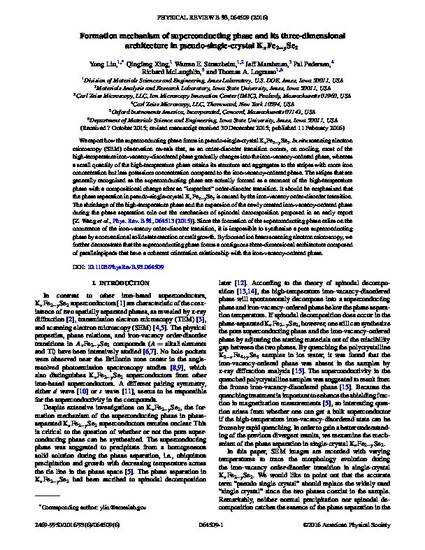
We report how the superconducting phase forms in pseudo-single-crystal KxFe2−ySe2. In situ scanning electron microscopy (SEM) observation reveals that, as an order-disorder transition occurs, on cooling, most of the high-temperature iron-vacancy-disordered phase gradually changes into the iron-vacancy-ordered phase, whereas a small quantity of the high-temperature phase retains its structure and aggregates to the stripes with more iron concentration but less potassium concentration compared to the iron-vacancy-ordered phase. The stripes that are generally recognized as the superconducting phase are actually formed as a remnant of the high-temperature phase with a compositional change after an “imperfect” order-disorder transition. It should be emphasized that the phase separation in pseudo-single-crystal KxFe2−ySe2 is caused by the iron-vacancy order-disorder transition. The shrinkage of the high-temperature phase and the expansion of the newly created iron-vacancy-ordered phase during the phase separation rule out the mechanism of spinodal decomposition proposed in an early report [Z. Wang et al., Phys. Rev. B 91, 064513 (2015)]. Since the formation of the superconducting phase relies on the occurrence of the iron-vacancy order-disorder transition, it is impossible to synthesize a pure superconducting phase by a conventional solid state reaction or melt growth. By focused ion beam scanning electron microscopy, we further demonstrate that the superconducting phase forms a contiguous three-dimensional architecture composed of parallelepipeds that have a coherent orientation relationship with the iron-vacancy-ordered phase.
Available at: http://works.bepress.com/thomas_lograsso/234/

This article is from Phys. Rev. B 93 (2016): 064509, doi:10.1103/PhysRevB.93.064509. Posted with permission.